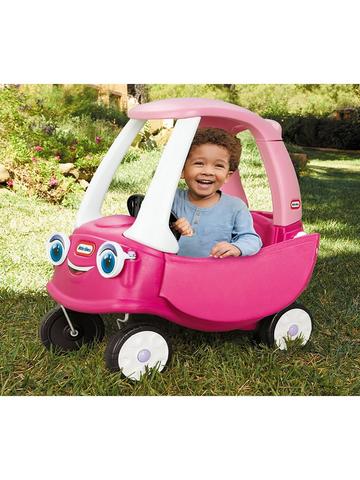Recommended Suggestions For Choosing Remote Control Childrens Cars
Wiki Article
What Ride-On Features Should I Be Looking At? Pros And Cons
To ensure your child's safety You should think about the following features. Seat Belts and other safety features are essential.
Pros - Seat belts ensure your child's safety in the ride-on vehicle, reducing the chance of them falling out or getting kicked out of the car in the course of play. They provide an extra layer of safety particularly when taking rapid turns or stopping abruptly.
Cons - Certain ride-on vehicles, especially those for younger toddlers, might not have seat belts. Children may be able to find seat belts restrict their mobility or uncomfortable and may decide to avoid or avoid using them.
Sturdy Construction
Pros: A ride-on car made of sturdy and durable materials is more durable and resistant to damage that ensures long-term safety and dependability. It can endure the rigors of playing and provide stability when it is used.
Pros - Sturdy materials can be costly and may not be affordable to some families. Moreover, the heavier materials can affect the maneuverability and portability of the ride on vehicle.
Low Center of Gravity -
Pros- Ride-ons with lower center of gravity will be less likely to tip over, which reduces the chance of accidents. They are more stable and balanced, especially when turning or performing moves.
Cons - Some ride-on cars with a lower center of gravity can result in a loss of the ability to drive off-road or ground clearance making them less suitable for certain situations.
Remote control for parents
Pros - Remotely controlled ride on cars enable parents to supervise, assist and monitor their child’s play. They offer an additional level of safety as well as parental supervision. Parents can intervene when emergencies arise, steer difficult terrain or prevent collisions.
Cons: Controlling parents using a remotes may hinder autonomy and independence in children who rely on their parents' guidance and help when playing. In addition, remote-controlled vehicles can cost more than traditional ride-on cars that require manual operation.
Speed Limiters -
Pros: Ride-ons with speed limits or variable settings for speed permit parents to control the maximum vehicle speed which reduces collisions and accidents. They can gradually increase speed as the child gains confidence and mastery.
Cons - Children could rapidly outgrow their slower speeds. This could cause frustration or even dissatisfaction. Certain models are not equipped with speed limiters, or they require additional accessories or features.
Safe Start Technology -
Pros- Safe start provides smooth stops and starts of the car ride which reduces the danger of abrupt jerks or movements that can frighten children or cause them to become unsteady. It's safer and more comfortable to drive.
Pros - Ride-ons with safe-start technology can be more expensive. Moreover, some children might feel that slow acceleration and deceleration is not as fun or exciting than instant starts and stops.
Visibility Enhancements -
Pros - Ride on vehicles that have visibility enhancements like functioning taillights or headlights as well as reflective material improves visibility, especially in dimly lit areas or low-light conditions. They enhance safety since they allow the vehicle to be seen to other vehicles or pedestrians.
Cons - Visibility enhancements could make batteries less efficient or cause problems with ride-on vehicle designs, increasing maintenance or malfunction risks.
By considering these safety features and weighing their pros and cons, you can choose a ride-on car that prioritizes your child's safety and provides an enjoyable and fun play experience. Have a look at the top rated ride on toys for site recommendations including car for toy, toy and car, childs ride on car, remote control childrens electric cars, electric ride along car, lambo toy car, kidscars, toy ride, pedal car, two seater electric cars and more. .

What Is The Reason Why Electric Ride On Cars Cater To Different Skills Levels?
The majority of electric rides have multiple speed and control settings to cater for children of different capabilities and offer a safe and fun riding experience. Why and how are these features implemented?
Children differ in their competence and confidence when it comes to drive on-road vehicles. Multiple speed settings allow parents to adjust the maximum speed according to the child's ability, which reduces the risk of collisions and accidents.
The lower speed settings are suitable for beginners or younger children that are just beginning to learn how to operate the ride-on cars While higher speed settings can be used by older children or those who have more experience.
Gradual Learning Curve -
Electric ride-ons with a variety of speeds provide an accelerated learning curve for children as they develop their driving abilities over time. Starting with lower speeds allows beginners to familiarize their bodies with the controls and gain confidence before moving into higher speeds.
As the child's driving abilities improve and speed increases, parents can increase the speed gradually. This provides them with a sense progress and accomplishment.
Parental control
Certain electric ride-on vehicles are equipped with parental control features which allow parents to control the maximum speed of the vehicle remotely. Parents will be able to feel secure by using this feature, since they are able to adjust or stop the vehicle at any moment to protect their child.
Models can include features for parental control, like remote speed limiters and emergency stop buttons.
Adaptability
The interests and abilities of children alter over time as they develop. Electric ride-on vehicles that have different speed settings provide flexibility and the ability to adapt to these changes over time.
As children improve their confidence and competence in their riding, they are able to move up to higher speeds in order to enjoy the most thrilling and challenging ride. Parents can slow down the speed of their youngest children and other friends.
Customization
Multiple speed settings allow for customization and personalization of the riding experience depending on personal preferences and preferences. The speed is altered to suit the child's comfort and level of enjoyment.
Certain electric rides-on vehicles come with additional controls, such as adjustable brake sensitivity or acceleration. They let the driving experience to be tailored to specific needs.
Overall, electric ride-on vehicles with a variety of speeds and control options give the safety, flexibility and custom-designed riding experience for children of various abilities, ages and interests. These features aid children in developing confidence and skills, while also providing them with fun and exciting adventures. Parents are able to monitor their child's progress and intervene if needed to ensure the safety of their child. Take a look at the most popular click here about Mercedes ride on car for more examples including 2 seater electric cars, remote control childrens electric cars, childrens electric cars, ride ons, digger ride, toy the car, car toy car toy, car for toy, race car toy, childrens digger and more. .

What Types Of Childrens Remote Controlled Cars Are On The Market? What Are The Pros And Cons Of These Cars?
Remote control cars for children are also known as RC or remote-controlled cars, are available in a variety of styles, sizes and costs. They are designed to meet the needs of different tastes and budgets. This article will provide an overview of the kinds, sizes, prices along with pros and cons of remote controlled children's cars The types of remote control Children's Cars
Electric RC Cars – Remote-controlled cars powered by batteries that can be used indoors and outdoors. They are available in a range of designs like buggies, trucks and sports cars.
Nitro RC Cars – Gas RC cars with faster speed and higher performance. However, they require more expertise and maintenance to run. They tend to be larger and cost more than an electric RC cars.
Scale Models can be controlled remotely that include trucks, cars and aircrafts. Scale models are available in a variety of scales, ranging from 10 to 1-24 and larger scales providing greater detail and realism.
Sizes -
Remotely controlled children's cars are available in a variety of sizes. These range from small miniature replicas to larger-scale replicas. The size of the car can influence its performance, speed and handling qualities.
Micro-sized vehicles are compact and light, and therefore perfect for indoor use and play by children who are younger. The larger-sized cars are more durable and powerful making them ideal for off-road racing as well as outdoor racing.
Prices
The cost of remote-controlled cars for children differ based on factors such as dimensions, features, brands and quality of construction.
The cost of smaller electric RC vehicles range from $20 to $100. However, larger-scale electric or nitro RC models can range between $100 and $500.
Scale models and top-quality hobby grade RC cars can cost several hundred dollars up to a thousand dollars, depending on the level of performance and detail.
The Pros and Cons of -
Pros -
Remote Control Children's Cars - These cars are great for entertainment. They are able to be used by adults and children alike.
Operating an R/C car helps children develop spatial awareness, problem-solving and hand-eye coordination.
Social Interaction - RC vehicles can be enjoyed with families and friends, encouraging the social aspect and cooperation.
Customization - Many RC vehicles can be upgraded with modifications and accessories that can improve their performance and appearance.
Cons
Costs - Quality remote control cars for children can be costly, especially hobby-grade models with sophisticated features.
Learning Curve - Operating an RC Car requires practice and ability, and younger children might have difficulty initially.
Maintenance - RC cars need regular maintenance, such as cleaning, lubrication, and occasional repairs or replacements of parts.
Safety Concerns – RC vehicles pose dangers to safety including falls, collisions and electrical hazards when they're not used under adult supervision and with the utmost care.
Children of all ages love remote-controlled cars. It is crucial to think about factors such as price, size and safety before choosing the best model. Hobby-grade RC models are suited to older children or people who enjoy. Less complicated models are better for younger kids and beginners. Take a look at the most popular kids cars kidscars.co.uk recommendations for blog tips including electric rideons, remote control childrens electric cars, car toy toy, childrens digger, toy the car, ride on toy, toy car toy car, two seater electric cars, electric ride along car, toy the car and more. .
